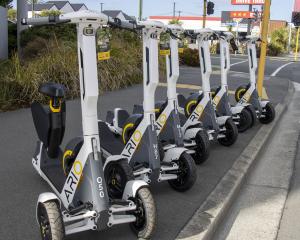
If approved, the Colombo St/Cashmere/Centaurus/Dyers Pass Rds intersection will have raised safety platforms on all approaches to the roundabout, sharrow markings to indicate cyclists and vehicles share the lane, wider pedestrian refuge islands, and new pedestrian and cycle crossings on Colombo St and Centaurus Rd.
Raised platforms are increasingly being used by Christchurch City Council to encourage safer speeds. They were first installed at the intersection of Lincoln Rd, Barrington Rd and Whiteleigh Ave. But not everyone was happy with the new feature.
Irate motorists took to social media to complain about the raised platforms on Lincoln Rd, saying the mini 'speed bumps' scrape the bottom of the cars and can damage suspension.
The Cashmere plan also includes kerb build-outs on the corner of Colombo St and Centaurus Rd, and on Dyers Pass Rd and Cashmere Rd.
Other proposed changes include a concrete lip around the centre of the roundabout to reduce the speed of vehicles, and two new bus stops.
City council transport operations manager Stephen Wright said vehicle speeds need to be below 30km/h to minimise the risk of serious injuries.
“These lower speeds result in less differential in speed between cyclists and other traffic and provide more time for users of the roundabout to react to other traffic and avoid potential incidents,” he said.
The proposal is in keeping with Waka Kotahi New Zealand Transport Agency’s Road to Zero strategy, which aims to reduce deaths and serious injuries on New Zealand’s roads by 40 per cent over the next 10 years.
Public consultation on the proposed changes for the intersection will be open until December 14.
The intersection was named Canterbury’s sixth most dangerous in May this year.
It was also identified as a high-risk intersection last year after a crash investigation study conducted by the city council.
There have been 27 crashes recorded over the last 10 years at the intersection, 10 of which caused serious injuries involving a person travelling on two wheels.
However, not everyone is happy with the proposed changes.
Since consultation opened last week, concerns were raised on social media over cyclists sharing the lane with vehicles.
Some asked to keep the dedicated cycle lane and said the changes would not make cyclists any safer.
However, Wright said cycle lanes should not be used at roundabouts as they put cyclists in a less safe position.

He said Waka Kotahi's Cycling Network Guidance recommends cycle lanes and road shoulders are terminated before the entry of the roundabout and sharrow markings are provided to indicate cyclists share the lane.
The reason is cyclists will be more visible to motor vehicles if they ride in the middle of the lane, which would slow vehicles to cycling speed.
In response to the request for traffic lights, Wright said a high number of road users mean other measures will need to be incorporated at any signal-controlled intersection.
More than 65 cyclists currently travel through the intersection during the morning peak, and more than 90 in the evening.
City council senior transportation engineer Gemma Dioni said caregivers have also been seen carrying children on bicycles.
The intersection has large numbers of pedestrians and people scootering through during the morning peak as well.
“It is noted that the utilisation of raised safety platforms to the existing roundabout achieves a similar level of safety to traffic signals with a raised safety platforms at a much more affordable cost,” Wright said.













